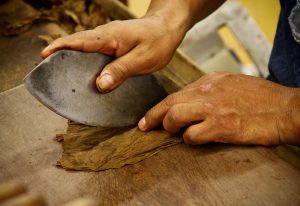How to Source Leather Consciously and Sustainably? It is a well-known fact that leather has been a widely used material for centuries due to its sturdiness, adaptability, and ageless appeal. But from deforestation to animal abuse, the manufacture of leather can significantly negatively impact the environment and morality. By purchasing leather from conscious and sustainable sources, we, as consumers, can change the world. Well, let’s move to the topic now.
Contents
Is leather considered sustainable?
The effects of leather production on the environment
The environmental effects of leather production are well-known. The following are a few environmental effects of leather production:
- Water pollution: Soaking, washing, and dyeing leather require a lot of water. Chemicals like chromium, frequently present in this water, can contaminate nearby water sources.
- Land pollution: Due to the high usage of various chemicals like chromium, formaldehyde, and arsenic in the tanning process, the soil gets highly polluted. The side effects of land pollution adversely affect both flora and fauna.
- Air pollution: Chemicals manufacturing leather release volatile organic compounds (VOCs) into the atmosphere.
- Deforestation: The leather industry contributes significantly to deforestation because it depends on raising cattle. This could lead to the loss of biodiversity and the destruction of habitats.
- Emissions of greenhouse gases: The energy required to produce leather is considerable, which could increase emissions and hasten climate change.
- Waste generation: The leather industry generates a lot of waste, including animal skins, wastewater, and chemicals. It is sometimes high and difficult to properly dispose of this waste.
Generally speaking, the environmental effects of leather production can be significant and widespread, so it is essential to consider alternative materials and production techniques that are more environmentally friendly and sustainable.
Ethically sourced leather
Additional ethical issues raised by the production of leather include:
- Hygiene: Numerous leather producers subject animals to cruel procedures like castration, dehorning, and tail docking without anesthesia. Animals are frequently housed in confined spaces that are unhygienic.
- Labor exploitation: Making leather can lead to exploiting workers, especially in developing nations where workers are paid pitiful wages and must work in dangerous conditions.
- Health risks: Toxic chemicals that can cause diseases like cancer and respiratory conditions can be exposed to workers in leather production facilities.
How to Source Leather Consciously and Sustainably?
You can follow the steps below to source leather in a sustainable manner:
- Look for certifications: Seek out leather products that have received certification from agencies like the Global Organic Textile Standard or the Leather Working Group (GOTS). These certifications guarantee that the leather was produced ethically and sustainably.
- Buy used: Buying used leather products is a great way to lessen your environmental impact and prevent aiding unethical practices.
- Elect for vegetable-tanned leather: Traditional leather is less environmentally friendly than vegetable-tanned leather because it uses toxic chemicals to tan the leather rather than natural materials like bark.
- Support regional producers: Purchasing leather goods from regional manufacturers can help small businesses and reduce the adverse effects of transportation on the environment.
- Don’t use exotic leathers: The production of exotic leathers, like snakeskin or crocodile skin, can harm regional ecosystems because they are frequently sourced from threatened or endangered species.

Other Materials Besides Leather
I know that you were searching for some alternatives for leather. See whether you know these?
Plant-based materials: Plant-based alternatives to leather include cork, pineapple leaves (Pinatex), and mushroom leather (MycoWorks).
Recycled materials: Products that resemble leather can be made from recycled materials such as plastic bottles (Recyc Leather), seat belts (Freitag), and even apple waste (Frumat).
Synthetic leather: Synthetic leather, also referred to as faux leather, is made without animal products and made from materials like polyurethane.
Remember to minimize the adverse effects of leather production on the environment and the ethical issues involved, and it is crucial to source leather ethically and sustainably. We can easily approach this target by selecting certified products, purchasing used items, and looking into alternative materials.
In conclusion, sourcing leather consciously and sustainably requires a shift in our approach to the material. It’s important to remember that sustainability is a continuous process and that, as consumers, we can affect change. We can contribute to a more ethical and sustainable fashion industry by choosing leather from responsible sources.
It is important to remember that sustainability is an ongoing process, and as consumers, we have the power to drive change through our purchasing decisions. By being mindful of the leather we use and supporting more ethical and sustainable practices, we can create a future where fashion is stylish, environmentally and socially responsible.
Also read: 4 important reasons why sustainable fashion matter today





